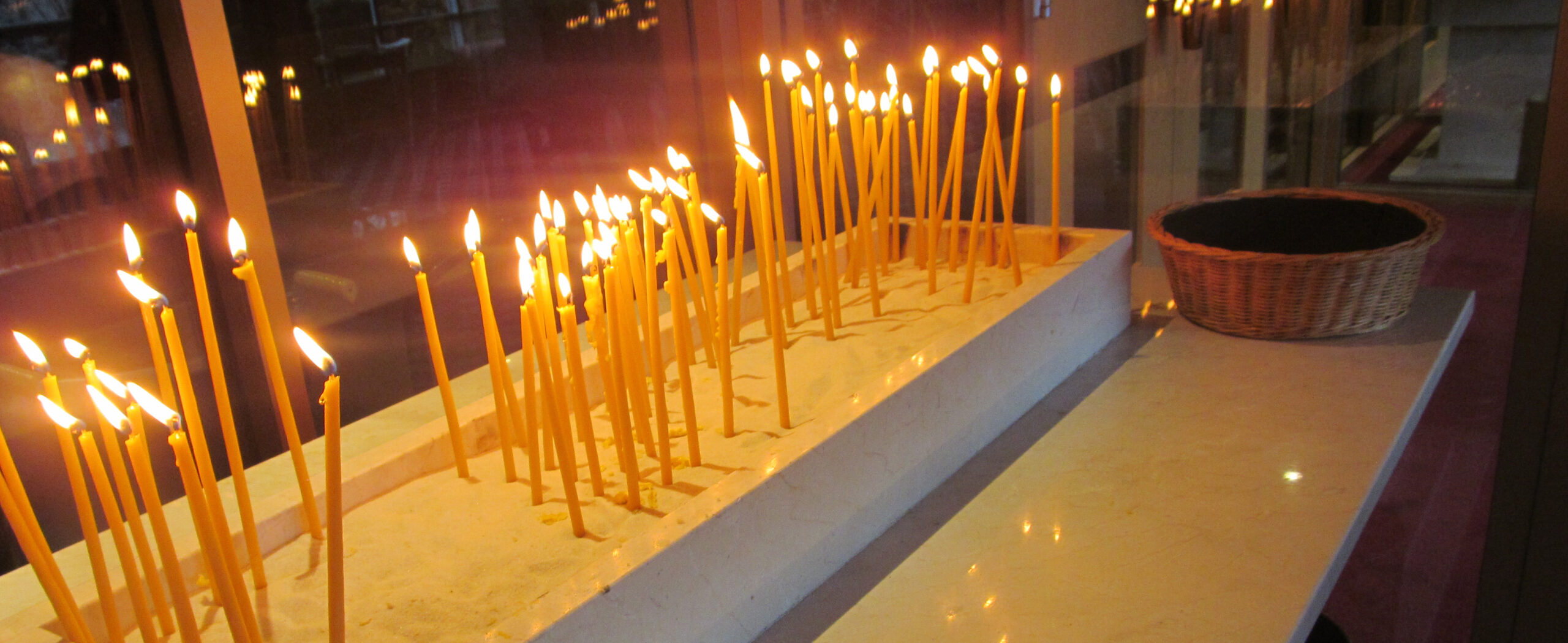Does the Orthodox Church celebrate Christmas the same way as you do?
The priest chants loudly as he rings the bells. The smell of burning frankincense and myrrh fills the church. The faces of the congregation are illuminated only by a faint golden candle glow. The people slowly join in the chant, intensifying the moment little by little. The congregation walks around the church, in procession, holding icons and banners, shouting and singing loudly.
It’s the holiday season in the Orthodox Church.
Christmas is celebrated differently every year by different religious denominations. Orthodox holidays relate to as well as differ from the Protestant and Catholic celebrations that most Minnehaha students are familiar with.
Orthodoxy commonly has been associated with Eastern Christendom. In the Twin Cities, Orthodox churches represent immigrant communities originally from Russia, Eastern Europe, Greece, Romania, Ukraine, Serbia, Armenia, Syria and Lebanon. Orthodox services tend to be more traditional than most other Christian worship services.
“One of the major differences is the atmosphere,” said senior Ethan Wagner, member of Saint Mary’s Orthodox Cathedral in Northeast Minneapolis. “There’s a lot more tradition. It’s what we’ve been doing for 1000 or some years, and the service hasn’t changed.”
Orthodox services are filled with a mix of mainly English and native languages with many hymns. The main goal and message is to worship God, not necessarily to socialize.
“In most churches nowadays it’s either a band or a person preaching, [but in Orthodox churches] the difference is there’s a lot less self-pride of the people who are presenting,” said Wagner, “like when a person is done giving a sermon and people clap. Clapping never happens in Orthodox [churches], mainly because it’s not themselves that should be thanked for giving the sermon, it’s more for the glory of God.”
Many people in the congregation would describe it with the words, traditional and symbolic.
“There’s incense and a lot of icons everywhere,” said Wagner. “It puts you in a holy area. Personally, I wouldn’t like to go to a church that looks like Minnehaha’s chapel or one that has a cross in the front. With the [Orthodox] icons, you kind of feel like you’re in a holy place and all of the saints are with you.”
In the Christmas service, there aren’t very many differences.
“Christmas is fairly similar to most Christmases, in terms of fellowship,” said freshman Elizabeth Dovolis, member of St. Mary’s Greek Orthodox Church near Lake Calhoun in Minneapolis. “But, for [the Orthodox] it’s not really celebrated as much. Easter is the pinnacle of our religion.”
However, the Christmas services do have some differences. During the advent season, it is customary for people to fast for 40 days.
“We don’t eat any dairy, meat or wheat,” Dovolis said. “For children that are growing up, [the church] is pretty good about only making [them] fast on Wednesdays and Fridays. Its not too strict for children.”
Another difference in the Christmas services is that the Orthodox service is always at midnight, so that it can be at the first hour of the day. Orthodox churches have only one liturgy per day.
“The service does make me feel closer to God because it’s an out of the ordinary service,” said Dovolis. “You wake up at 12 at night just to go to this one service and feel special.”
Also in the service, the congregation proceeds around the church three times. The significance of the number three is very important to the church, as it represents the Father, Son and Holy Spirit.
In the service, hymns are sung first. The clergy enter, and there is a procession with the clergy. Then, a reading from an epistle, a letter in the Bible, is read by the priest followed by a gospel reading. The sermon is given, more hymns are sung, communion is taken and finally the last hymns are sung.
In the Orthodox Church, the holidays are also on different days. Jan. 6 was known to be the first celebration of Jesus coming into the world. It is also called the epiphany. Sacred Studies teacher Jeff Crafton said, “In the Eastern Orthodox part of Christianity that never changed, and so that became the celebration of Jesus’ birth. And that continues until today, in many orthodox churches.”
However, Orthodox churches do celebrate both the epiphany and Dec. 25. Crafton says, “[Churches] could do that, because they’re in America, and they’re fitting in with the American culture.”
Still, for senior Anna Woronzoff, like Wagner, a member of Saint Mary’s Orthodox Cathedral in Northeast Minneapolis, the traditional service is a source of pride. “I like Orthodox because in a Protestant church, they might have a giant tree up, and it might seem a bit ‘superficial’ if you will,” she said. “I know they aren’t trying to do that, but at the same time, it’s more ‘Americanized.’ I would say the one thing that has become more ‘Americanized’ in the Orthodox Church is that we do have a tree, but it’s small. That’s one of the things Orthodox people take pride in – that it hasn’t changed at all.”
Wagner agrees, one of the beauties of Orthodoxy is that it hasn’t changed. Whether in holiday services or regular services, it has been the same practice since its earliest years. The message is still the same throughout all churches – Jesus is born – but Wagner says the best part of the Orthodox service is that “it puts you in the mindset to actually worship. It’s not about Christmas cheer or anything. It’s about worshipping the birth of Jesus.”

